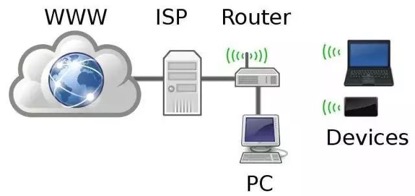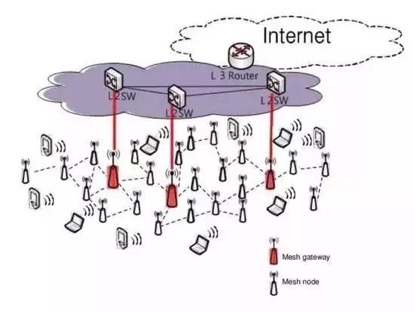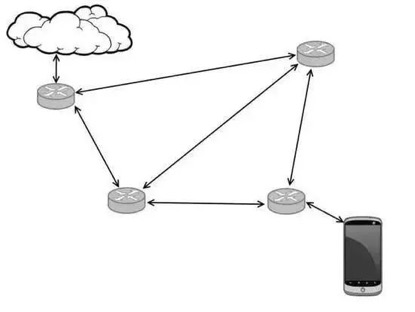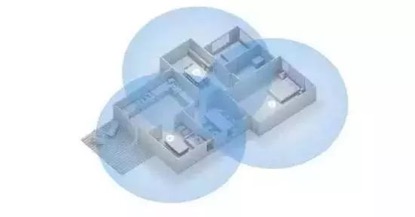100% Pass Cisco, PMP, CISA, CISM, AWS Dumps on SALE!
Get Now
01:59:56
X
What is Mesh technology?
Since its birth in the 1960s, the development of network technology has been extremely rapid. The star structure, ring structure, bus structure, distributed structure, and tree structure of traditional LANs have played a role in various fields, serving billions of people worldwide. Provides a stable network connection and a large amount of data traffic.
However, there is such a LAN technology, which was born very early, but due to its complex structure, it has not received people's attention. However, with the development of wireless network technology today, its advantages have been re-emphasized. This type of network is the Mesh network, which is a mesh network structure.
Today, we will introduce to you in detail what kind of technology the Mesh network is.
Before talking about the network structure of Mesh, it is necessary to talk about the traditional LAN structure that has faced a bottleneck.
Basic network topology
The basic structure of a local area network includes a star structure, a ring structure, a bus structure, a distributed structure, and a tree structure.
The most common and widely used star structure has a central node as the core, and other nodes are connected to the central node. This structure has higher cost and lower reliability, but its delay is small and its structure is simple and easy to manage.
The bus-type structure is that each network device is connected to a bus without an obvious center. The advantage is that the structure is simple and the scalability is good, but the disadvantages are also obvious, such as difficulty in maintenance and difficulty in finding branch structure faults.
In order to be safer and more efficient in use, most commercial LANs in operation currently use a combination of multiple network topology modes to maximize the performance of the LAN and avoid obstructions.
For ordinary users, we generally do not care about how the operator's computer room should be arranged. The local area network that can be most directly contacted is the network layout of the home, unit or even the community.
At present, typical local area network layouts use a star structure or a multi-layer star structure. The network is accessed through the main router, then distributed to each sub-router, and finally connected to different hosts and devices. Such wiring is relatively simple to implement, and the number of cables required is relatively small.
This layout method and layout ideas span the wired and wireless era. For example, in the home, users will access the network from network service providers such as Telecom and China Unicom, and then use the wireless router to transfer multiple signals or wireless signals for the home. Used by multiple wired and wireless devices, this is also a typical star structure.

Star topology
The development of LAN topology such as star structure and bus structure has brought about the explosion of the Internet, but its inherent defects have always been unavoidable, such as the security and reliability of data centers, and the difficulty of maintaining bus layouts. Although the technical staff has strengthened the traditional LAN structure through various means, and even used the composite topology, but because the inherent problems have not been solved, people's experience is still difficult to be guaranteed.
In order to break through the bottleneck of the traditional LAN structure, in recent years, a network topology that is not new but has not been valued due to technical limitations has come to the forefront. This is the Mesh-mesh network structure.

Typical Mesh Structure
Speaking of the word Mesh, the English meaning is very simple, that is, net, grid, mesh. From its basic definition, the topology of a mesh network is: all nodes in the network are connected to each other, and each node is connected to at least two other nodes, and all nodes form an integrated network.
In the wired era, it is very difficult to implement a mesh layout network due to the existence of network cables. However, in the wireless age, the layout of the wireless mesh network is relatively easy because it is freed from the fetters of network cables and then applied with various new technologies.
From the perspective of network topology, wireless mesh networks have the following characteristics:
• Node interconnection: All nodes in the local area network are connected together. There are multiple connection channels between any two nodes, and there is a clear decentralization trend. It consists of a group of wireless APs that are distributed in a network. The APs are interconnected through wireless relay links in a point-to-point manner, extending the wireless "hotspots" in traditional WLANs into wireless "hot areas" with truly large coverage.
• Self-configuration: APs in a wireless mesh network have the capability of automatic configuration and centralized management, which simplifies network management and maintenance.
• Self-healing: APs in a wireless mesh network have automatic discovery and winter routing connections, eliminating the impact of a single point of failure on services and providing redundant paths.
• High bandwidth: Extend the coverage of traditional WLANs from "hot spots" to larger areas of "hot spots" to eliminate the decrease in bandwidth caused by the original WLANs over distance. In addition, the system adopts Mesh structure, the signal can avoid the interference of obstacles, make the signal transmission unobstructed, and eliminate the blind zone.
• High utilization: High utilization is another technical advantage of Mesh networks. In a single-hop network, a fixed AP is shared and used by multiple devices. With the increase of network devices, the availability of the communication network of the AP will greatly decrease. In a mesh network, since each node is an AP, such a problem does not occur at all. Once the availability of an AP decreases, the data will automatically reselect an AP for transmission.
• Compatibility: Mesh adopts the standard 802.11b / g / n / ac format, which can be widely compatible with wireless client terminals.
From an application perspective, the advantages of wireless mesh networks are also very obvious:
Fast deployment and easy installation
Wireless mesh networks are fast to deploy and easy to install. Because the data is transmitted wirelessly, the user only needs to remove the device from the box and connect it to the power supply, and then enter the configuration page.
This is because in a wireless mesh network, except for a few node devices that require network cables and AP connections, most devices require only one power cable, and no network cables and AP connections are required. All data is transmitted wirelessly. This not only greatly saves connection speed, but also reduces the difficulty of wired layout, which is very convenient.

Wireless transmission of data between nodes
Outstanding robustness of wireless mesh networks
We know that in a common local area network, all data is connected to a single AP for transmission and reception. In a local area network, if there is a central AP, since there is only one road for data transmission, it is easy to cause data congestion or failure in actual use (such as the AP connection is disconnected or the device is damaged, etc.).
However, in a wireless mesh network, due to the characteristics of its multi-hop network, a node can be connected to at least two other nodes. When one node is blocked or does not respond, the wireless mesh network can select other nodes for data transmission according to the situation.
In other words, the wireless mesh network has at least one backup path, so the reliability of data transmission is very high.
Achieve non-line-of-sight transmission
Another feature of wireless mesh networks is their ability to provide non-line-of-sight transmission. The so-called non-line-of-sight transmission refers to providing transmission functions in areas outside the coverage of the original signal. This is also well understood, because each node has the characteristics of simultaneous reception and transmission, which is equivalent to expanding the network coverage to a certain extent.
For example, the traditional network has only one data sending node, which is the central node connected to the AP. Within the coverage of the central node, data transmission and transmission is effective, but it becomes invalid after the distance becomes longer.
In a wireless mesh network, each node is equivalent to a repeater, which is equivalent to expanding the data coverage. It can provide a network for users outside the line-of-sight of the nodes connected to the AP, which greatly improves the application field of wireless networks. And coverage.
Flexible structure
In fact, the flexibility of the structure is related to the robustness, that is, there is no data congestion or node failure. When data needs to be transmitted between two nodes in a wireless mesh network, the nodes can automatically select the forwarding path with the fastest response time and the highest transmission speed according to the connection and response conditions, thereby avoiding node communication jams.
Even for some nodes with extremely high permissions, multiple nodes can be selected to transmit data to multiple targets at the same time, which greatly saves data transmission time and improves efficiency.
High bandwidth and high transmission efficiency
Bandwidth is always a difficult problem. Because of the characteristics of wireless communication, the bandwidth can be easily increased only when the transmission distance is short. However, the transmission distance of data is closely related to the strength of the signal, and the coverage area of the traditional single-center method is limited.
Due to the non-line-of-sight transmission characteristics of wireless mesh networks, better signal coverage and higher strength make it easier to increase the total bandwidth. In addition, because of the role of node relay, the wireless Mesh network has excellent signal coverage, so the power required for transmission is reduced, which also helps to save energy.

Wireless Mesh Network Significantly Improves Signal Coverage
From the introduction above, it is not difficult to see that the advantages of wireless mesh networks are very prominent. It can solve the common problems of star-structure LANs and bus-structure LANs. Functions. If it can be applied to new wireless network products, it is expected to lead the further development of network technology and achieve higher transmission speed and wider signal coverage.
No matter the technology or principle of wireless mesh network, it is better than the wireless technology we currently use. With regard to key indicators such as coverage area and performance, wireless mesh networks rely on innate structural advantages to bring excellent network coverage effects, and their development prospects are widely promising!
The above is the news sharing from the PASSHOT. I hope it can be inspired you. If you think today' s content is not too bad, you are welcome to share it with other friends. There are more latest Linux dumps, CCNA 200-301 dumps and CCIE Written dumps waiting for you.
Cisco Dumps Popular Search:
200-301 dump ccna 200-301 command guide pdf ccie data center salary in uk ccna book reddit spoto ccna club ccna certification chart cisco certification vs degree cisco ccna assessment labs (200-301) ccna brain dumps best best ccnp practice exams
Copyright © 2025 PASSHOT All rights reserved.






